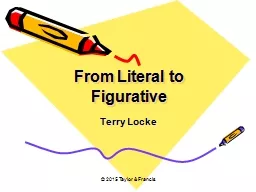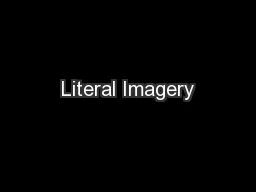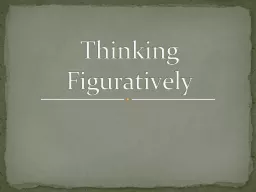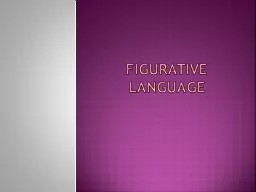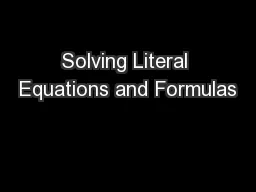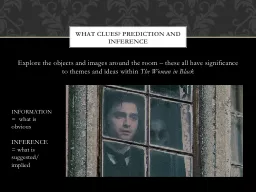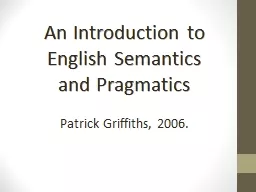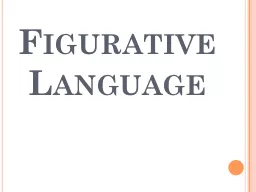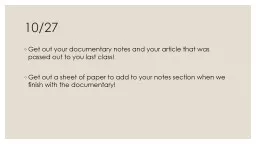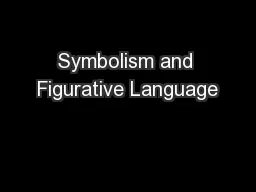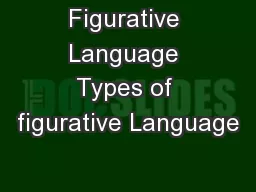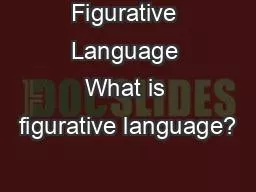PPT-From Literal to Figurative
Author : sherrill-nordquist | Published Date : 2018-03-12
Terry Locke 2015 Taylor amp Francis Some theory Sensemaking as aesthetic When we make sense of some aspect of our experience we give it some kind of form or shape
Presentation Embed Code
Download Presentation
Download Presentation The PPT/PDF document "From Literal to Figurative" is the property of its rightful owner. Permission is granted to download and print the materials on this website for personal, non-commercial use only, and to display it on your personal computer provided you do not modify the materials and that you retain all copyright notices contained in the materials. By downloading content from our website, you accept the terms of this agreement.
From Literal to Figurative: Transcript
Download Rules Of Document
"From Literal to Figurative"The content belongs to its owner. You may download and print it for personal use, without modification, and keep all copyright notices. By downloading, you agree to these terms.
Related Documents

